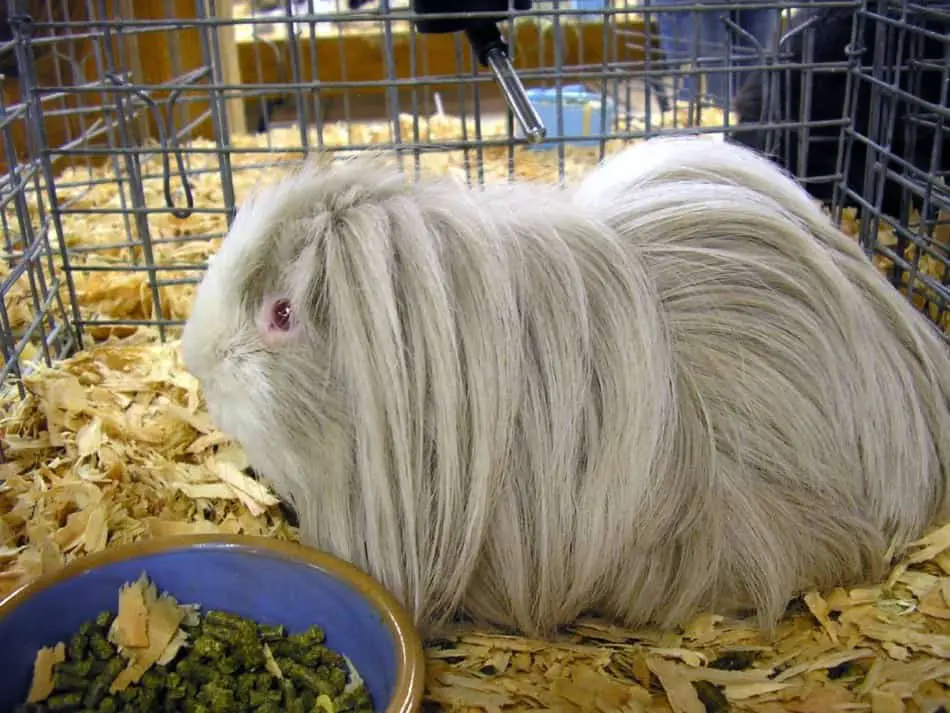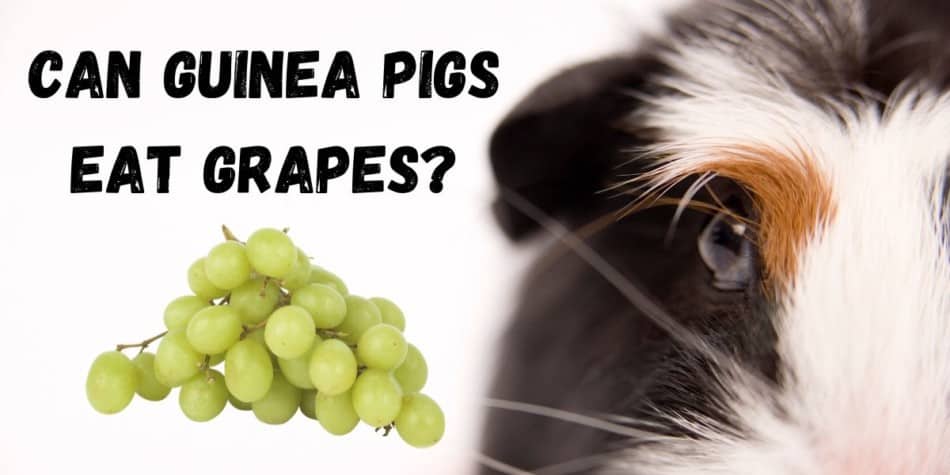Guinea pigs are herbivorous rodents that can eat grapes, but they can’t eat a lot at a time. It should be in moderation.
Eating too much is bad for the guinea pigs teeth and stomach.
In this article, we will look at how grapes can be beneficial to guinea pigs.
Can Guinea Pigs eat grapes?
Guinea pigs willingly eat grape leaves, vines, and berries. You can give your guinea pig grapes no more than once a week little by little. This is because grapes contain a large amount of glucose, which causes fermentation processes in the intestine and dysbiosis.
Table of Contents
Composition of grapes and their beneficial properties
Grapes have enormous benefits for guinea pigs. They contain a variety of vitamins namely:
- Vitamin B-9(folic acid);
- Vitamin A (retinol and beta-carotene);
- Vitamin C;
- Vitamin K;
- Tocopherol.
The presence of vitamin C heals the gastrointestinal tract of guinea pigs and strengthens the immune system.
Vitamins of group B, which are contained in large quantities both in leaves and in the vine, will help improve the condition of the skin and improve the functioning of the cardiovascular system.
Eating grape leaves helps increase the body’s resistance to viruses, accelerate metabolic processes.
In addition to vitamins, the cells of the leaf also contain trace elements necessary for the health and normal functioning of all animal body systems.
List of micro and macro elements include:
- selenium;
- potassium;
- calcium;
- phosphorus;
- iron;
- magnesium;
- sodium;
- copper;
- zinc.
Each of these trace elements plays an important role in the functioning of all organs of guinea pigs.
Calcium and manganese are responsible for the development of the musculoskeletal system, iron is necessary for the production of hemoglobin, and a sufficient amount of magnesium is the key to the normal growth and development of guinea pigs.

Grape berries for guinea pigs
Grape berries contain many vitamins, minerals, and glucose.
All nutrients together have bactericidal properties.
Berries are rich in glucose, which is a source of carbohydrates that guinea pigs need for normal development, and their absence in the diet of animals can lead to liver dystrophy.
Usually, the carbohydrate balance in the body of guinea pigs is maintained thanks to potatoes and crops.
If there is no opportunity to feed a guinea pig with these products, then the grapefruit will be very useful.

The use of berries is recommended for pregnant or already giving birth guinea pigs.
Guinea pigs are not forbidden to eat grape berries, but caution should be exercised when feeding them with sweet fruits.
Excess glucose in the body can lead to obesity, dysbiosis, and digestive problems.
It is important to remember that everything is good in moderation, so you should not give fruits every day.
Up to four months of age, you should give guinea pigs berries.
The reaction of their digestive system to grapes can be unpredictable. Upon reaching this age, it is allowed to introduce a treat into the diet.
For the first time, 1-2 seedless berries can be offered to the pet. If after such meal symptoms of indigestion appear, the berries should be excluded from the menu.
Feeding guinea pigs with grape leaves and shoots are possible if there are no problems with digestion afterwards. Useful greens are included in the diet of rodents starting from three months.
Branch food is given for grinding teeth, but you need to be careful with berries. Grapes are a delicacy that animals are introduced to the diet no more than once a week for 15-20 grams.
Feeding rules
The most important rule is that the pet diet should be varied.
It is unacceptable to feed animals with the same herbs; otherwise, this will lead to excessive accumulation of some substances in the body and a lack of others.

Leaves and a vine of grapes are suitable for guinea pigs.
These parts of the plant are well absorbed. The maximum amount of nutrients in the leaves and shoots of grapes is concentrated in fresh shoots.
Young leaves are pleasant, juicy making guinea pigs eat them willingly.
Like any other greens, grape leaves are dried before distribution. In this form, they are better digested.
If the vineyard was treated with pests with chemicals, the greens must first be washed and then dried for 3-4 hours in the air under a shade.
When and how much to give guinea pigs
Grapes contain a fairly large amount of glucose, which, when overfed, causes an upset of the digestive system, as well as an excessive accumulation of fatty deposits.
That’s why juicy foods like grapes do not need to be fed in large quantities.
But it is worth noting that glucose is useful to guinea pigs during the period of feeding young animals, as well as after they are ill to recover their well-being.
The grape itself cannot be the basis of the diet, only as a supplement to the usual feed.
Grapes berries, leaves, and vine should not be fed to animals already having digestive problems, again because of the large amount of glucose.
Grape leaves can be given to guinea pigs in dry form, whereas the berries can be given in the form of raisins.
The vine is suitable for feeding guinea pigs, but the one which has been sprayed with substances and chemicals.
After the first grape feeding, it is necessary to observe the condition of the animal; since various disorders can occur, and the guinea will fall sick.
In this case, the grape does not suit it.

How to feed grapes to Gunies Pigs
- The proportion of grape leaves in the total mass of green feed should not exceed 15%;
- The green part of the plant can be mixed with other types of herbs – burdock, plantain, and nettle.
Leaves taken from the vineyard include hay. In winter, such food will become an additional source of vitamins.
Raw materials are dried under a canopy or in the attic, in a place protected from sunlight, because ultraviolet light destroys ascorbic acid and other useful substances.
Conclusion: Can Guinea Pigs Eat Grapes?
Remember that guinea pigs should not be given wild (girlish) grapes, which is used for landscape design.
Its leaves and berries are inedible. Any changes in nutrition should be carried out sequentially.
If you introduce a new feed – its dose should increase gradually. And it is imperative to monitor how the pet’s body responded to the new component.
With the right approach to the diet and monitoring its effect on health, you can choose the most proper nutrition for your guinea pigs.




